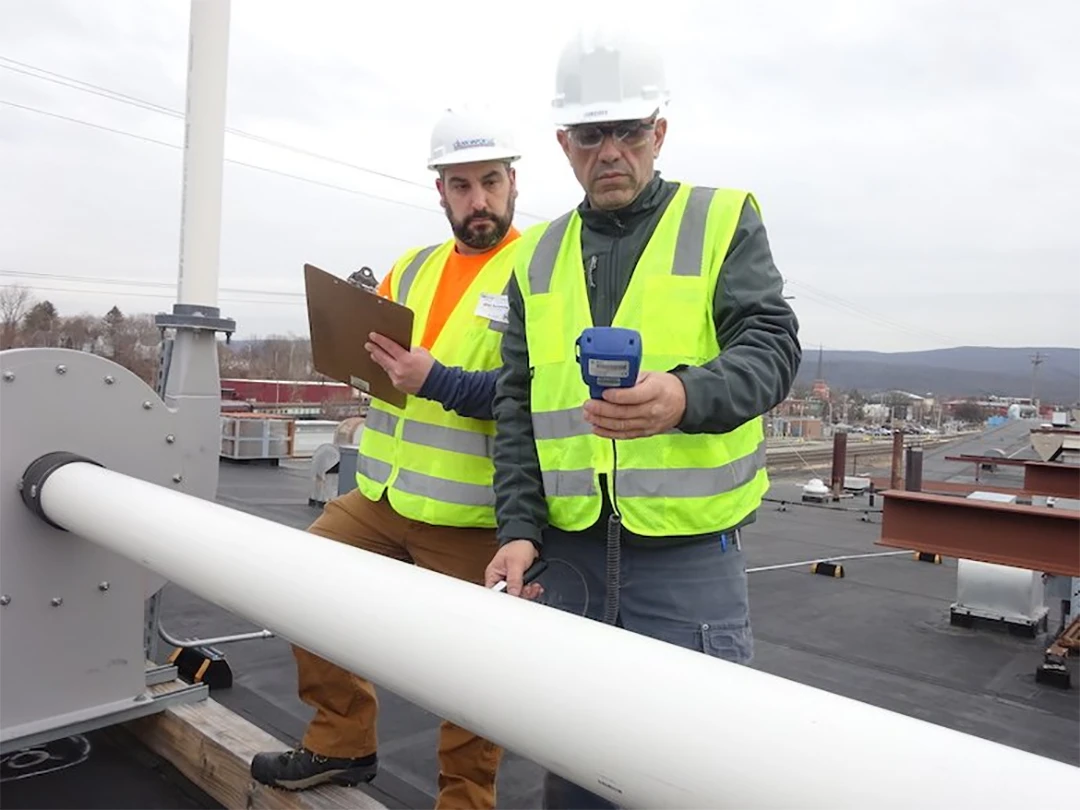
What Are Vapor Mitigation Systems?
Vapor mitigation systems are engineered solutions designed to prevent harmful vapors—such as volatile organic compounds (VOCs) and other hazardous chemicals—from entering buildings. These vapors can originate from contaminated soil, groundwater, or industrial sites, and can pose significant health risks if inhaled over time.
Importance of Vapor Mitigation Systems
Vapor mitigation systems are essential for protecting public health and the environment from harmful volatile organic compounds (VOCs) and other hazardous gases that can seep into buildings from contaminated soil or groundwater. The importance of these systems cannot be overstated, particularly in urban areas or sites near industrial activities.
Health Protection: Exposure to harmful vapors can lead to severe health issues, including respiratory problems, neurological disorders, and even cancer. Installing vapor mitigation systems significantly reduces the risk of these health hazards by preventing toxic gases from entering living and working spaces.
Regulatory Compliance: Many regions have strict regulations concerning indoor air quality and hazardous substances. Implementing effective vapor mitigation measures helps property owners comply with these laws, avoiding potential fines and legal issues. It also reflects a commitment to maintaining a safe environment for occupants.
Property Value: Properties with known vapor issues may experience decreased marketability and value. A thorough vapor mitigation plan can enhance a property’s appeal, as potential buyers and tenants are increasingly prioritizing safety and health in their decision-making process. A property equipped with a reliable vapor mitigation system is more likely to attract interest.
Environmental Responsibility: Vapor mitigation systems play a crucial role in reducing the environmental impact of hazardous gases. By controlling vapor migration, these systems help maintain air quality and protect surrounding ecosystems.Types of Vapor Mitigation Systems
There are several types of vapor mitigation systems, each suited for specific scenarios. The most common types include:
1. Active Vapor Mitigation Systems
Active systems utilize mechanical equipment to actively draw vapors away from the subsurface and vent them safely into the atmosphere. These systems typically consist of:
Sub-slab depressurization (SSD): This method involves creating a vacuum beneath a building’s foundation, preventing vapors from entering.
Ventilation fans: These fans help move air from beneath the slab to the outside, ensuring that harmful vapors do not accumulate.
2. Passive Vapor Mitigation Systems
Passive systems rely on natural pressure differentials to control vapor intrusion. They typically use vent pipes and a gravel layer to allow vapors to escape without mechanical assistance.
Passive venting systems: These systems employ strategically placed vent pipes that allow vapors to escape through natural airflow.
3. Hybrid Systems
Hybrid systems combine both active and passive methods to provide a more robust solution for vapor mitigation. They may use passive vents but can also activate fans if vapor levels exceed certain thresholds.
Installation Process
Installing a vapor mitigation system involves several steps, and it’s crucial to work with professionals who understand local regulations and best practices. Here’s an overview of the installation process:
1. Site Assessment
Before installation, a thorough site assessment is conducted to determine the presence of vapor sources, the types of contaminants, and the specific mitigation needs.
2. Design Phase
Based on the site assessment, a customized design is created. This design will detail the type of system, layout, and necessary equipment.
3. Installation
During installation, the following tasks are typically performed:
Excavation: If needed, soil may be excavated to install the necessary components.
Component Installation: This includes placing vents, pipes, and fans as per the design plan.
Sealing: All openings in the building foundation are sealed to ensure a tight barrier against vapor intrusion.
4. System Testing
After installation, the system is tested to ensure it operates effectively. This may involve measuring airflow, pressure differentials, and vapor concentrations.
5. Final Inspection
A final inspection ensures the system meets all regulatory requirements and functions as intended.
Maintenance Considerations
Vapor mitigation systems require regular maintenance to ensure their ongoing effectiveness. Here are some key maintenance tips:
1. Routine Inspections
Conduct periodic inspections to check for any signs of wear or damage. This includes inspecting vents, fans, and seals for proper functioning.
2. Monitoring
Regularly monitor vapor levels and system performance. Many modern systems come with monitoring equipment that can provide real-time data.
3. Cleaning
Keep vents and fans clean to prevent blockages that could impair the system’s effectiveness.
4. Documentation
Maintain detailed records of inspections, maintenance, and any changes to the system. This documentation is crucial for compliance and can be beneficial during property transactions.
Regulatory Compliance
Compliance with local and federal regulations regarding vapor intrusion is essential. In the United States, agencies like the Environmental Protection Agency (EPA) provide guidelines on vapor mitigation and monitoring. Ensure that your system meets all applicable standards to avoid legal and financial repercussions.
Common Challenges
While vapor mitigation systems are effective, they can face certain challenges:
1. Site-Specific Conditions
Each site presents unique challenges, such as varying soil types, groundwater levels, and contaminant concentrations. A one-size-fits-all approach does not work, making customized solutions vital.
2. System Design Complexity
Designing an effective vapor mitigation system can be complex. Poorly designed systems may fail to provide adequate protection, leading to continued vapor intrusion.
3. Maintenance Requirements
Failure to maintain the system can result in decreased performance. Regular inspections and proactive maintenance are essential to keep the system functioning correctly.
Final Words
Vapor mitigation systems are crucial for protecting both human health and the environment from harmful vapors. By understanding the types of systems available, the installation process, maintenance requirements, and regulatory compliance, property owners can make informed decisions about their vapor mitigation needs. As awareness of environmental issues grows, investing in these systems will not only enhance safety but also improve property values and community well-being. If you suspect vapor intrusion in your property, don’t hesitate to consult with professionals to explore your mitigation options. Your health and safety are worth it.
Comments
comments